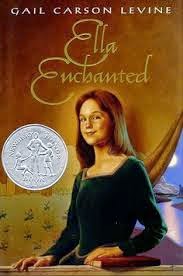It's okay. We can talk about Book Club.
The first rule of book club is actually the only rule: lose yourself in the story. It doesn't matter to me if the kids read the book themselves, hear it on .mp3, or listen while mom or dad read it. I just want them to wrap themselves in the story and then tell me what they think.

I got the idea for our kids' book club three and a half years ago, at the end of my daughters' first grade year. Penelope was a voracious, confident reader, yet Emma clung to her Step-one readers, reluctant to trade them for the beckoning stack of Step-twos. Witnessing her twin zip through the
Geronimo Stilton series and anything else she could find, left Emma feeling forlorn, jealous, and more than a little hopeless. She had a collection of
American Girl books that she wanted to read, but was too afraid to try. The letters were too tiny. The long blocks of text may as well have been Mt. Everest. One evening I found Emma in bed, crying because she wanted to read a book she'd chosen about a magic puppy. It was written at a third grade reading level and there was no art.
I decided that not being able to read at grade level yet was no reason for Emma to not enjoy the stories that interested her. I would read them to her, and she could read ahead whenever she wanted. But wouldn't it be even better if a bunch of Emma's friends read (or heard) the same book and I got the kids together to talk about it, just like a regular book club?

I started researching kids' book clubs and at the time, there wasn't much guidance. Everything was either story time ideas for preschoolers or Socratic method guidelines for high schoolers. Then I found
Deconstructing Penguins: Parents, Kids, and the Bond of Reading by Lawrence and Nancy Goldstone. The Goldstone's model was a little weightier than what I had in mind but it gave me someplace to start. It also gave me the confidence to move forward, no longer worried that it was a crazy idea. Once I mentioned it to the girls, it was all they talked about whenever we were near a bookstore. They chose
Guardians of Ga'Hoole: The Capture as the first book.
Our first year was rocky. I set the age range a bit too wide and made the mistake of giving the kids full control over the book selections. Some months I got books that were meaty, but other months I got books with no inciting incident, no tension, and no reason for me to keep turning the page. The following year, I narrowed the age range and turned to lists of Newbery Classics from the past 60 years. We always had something to talk about, even if it was how some books don't hold up over the decades or what constitutes too much of a suspension of disbelief. Now I keep a running list of books my daughters love and books people recommend. Each spring, I type those titles into a few search engines and see what else comes up with similar themes. I pull together a list of 30 to 40 titles, provide a synopsis for each one (usually the back cover blurb), and let the kids vote. Each kid in the book club gets to pick and prioritize the four titles they're most interested in reading. I work some ranking and weighting magic that ensures everyone gets their top pick, and fill in the holes with other high-ranked titles. I never said I wasn't a geek.

Because we're a group of homeschoolers, we meet in the middle of the day. Officially, we meet for 90 minutes. Unofficially, people hang out as long as they want...or until I kick them out so I can get the girls changed for their sports. Our meetings have a loose structure: we talk about the book for 20 to 30 minutes, then break for snacks and social time. Early on, we started matching the snack to the book. For
Pippi Longstocking, we baked pepparkakor. For
Mr. Popper's Penguins, we brought in a tray of fresh sushi. Some books require more creativity with snack planning because either food is rarely mentioned or it's simply unappetizing, like the bland canned food that sustains the citizens of
Ember. Occasionally there are foods we must avoid: serving ham for the
Charlotte's Web discussion would have been disturbing.

Parents are free to join the conversation as long as they don't dominate it. Discussion points range from kids sharing their favorite or least favorite parts, to making observations about a character's motivation or the author's style, to talking about literary techniques and terms and analyzing their use in a book. When we read
The Invention of Hugo Cabret, I found a few films by Georges Méliès on YouTube and pulled them up for everyone to watch. The discussion is never what I expect, but it always leads down rabbit-holes and often results in the kids discussing fairly weighty issues.
Our book club is in its fourth year, and Emma is reading almost everything on her own. She still reads slowly, but is a lot more confident in her abilities. Now Emma self-identifies as a reader, knows that she loves fantasy stories, has favorite authors, and spends her own money on books. Sometimes she even stays up late to finish a chapter.


.JPG)











